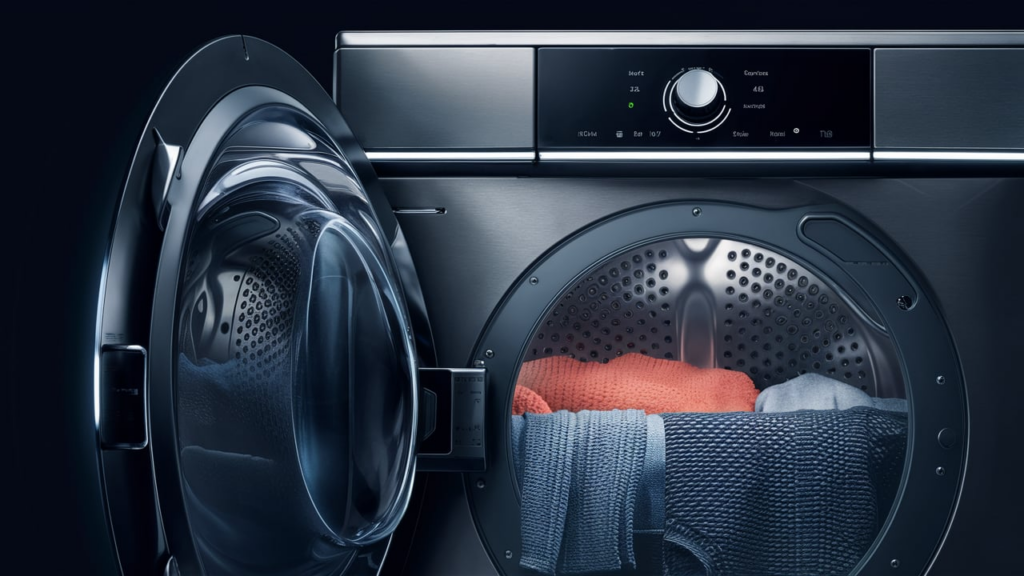
If the keypad on your Whirlpool dryer is malfunctioning, it may require replacement. Before proceeding, consider these troubleshooting steps to confirm the need for a new keypad.
Understanding the Keypad’s Function
The keypad, also called the user interface control, allows you to interact with the dryer’s settings and functions. It sends signals to the control board to execute commands such as starting a cycle or adjusting the temperature. Damage or wear can disrupt these signals, leading to unresponsive buttons or erratic behavior.
Identifying Common Causes of Keypad Issues
Keypad problems can result from various factors, including:
- Wear and Tear: Frequent use over time can cause buttons to lose sensitivity.
- Moisture Damage: Exposure to moisture can corrode internal components or short out connections.
- Electrical Surges: Power surges can damage the keypad or associated control board.
- Physical Damage: Dropping or mishandling the dryer can lead to cracked or broken keypads.
Common Symptoms of a Malfunctioning Keypad
- The dryer doesn’t turn on.
- Buttons fail to respond.
- Only certain buttons are functional.
- Visible signs of damage, such as black marks or missing solder.
- The keypad fails a diagnostic test.
Tools and Materials Needed
- Short Phillips screwdriver
- Putty knife
- Multimeter
Safety Guidelines for Dryer Maintenance
Prioritize safety when working on appliances. Here are key precautions to follow:
- Unplug the dryer or switch off its circuit breaker to eliminate the risk of electric shock.
- If the appliance was recently in use, let it cool completely before beginning any work.
- Avoid rushing to prevent accidents or damage to the dryer.
- Use a well-lit area and clear away clutter. Keep children and pets out of the work zone.
- Avoid working with wet hands, and make sure the workspace is dry to reduce the risk of electrical hazards.
- Check for any model-specific safety or installation instructions related to the dryer or replacement part.
- Use care when removing or installing components to avoid damaging the dryer or causing personal injury.
- Wear insulated gloves to safeguard against sharp edges and debris.
- Use safety glasses and a dust mask if working with chemicals, dust, or significant debris.
- When handling wiring, use non-conductive tools or insulated gloves to reduce the chance of electrical shock.
How to Troubleshoot a Whirlpool Dryer Interface Control
Access the Interface Control
- Turn off the dryer and disconnect it from the power source.
- Use a putty knife to release the two locking tabs on each corner of the console.
- Lift the console at the front and pull it forward, flipping it downward.
- Remove the interface control cover using a Phillips head screwdriver.
Inspect the Control
- Look for visible signs of failure, such as black marks, missing solder points, or physical damage.
- Replace the control if any damage is found.
- If there are no visible issues, move on to testing the control.
Test the Control
- Disconnect the wire connection from the control.
- Set a multimeter to the continuity setting (indicated by a sideways WiFi symbol).
- For controls with a removable wire harness:
- Place the multimeter probes on each end of the wires and check for continuity.
- If the wires show continuity and can connect securely, replace the interface control.
- For controls with a ribbon harness:
- Refer to the tech sheet for the pinout and keychart.
- Place the multimeter leads on the connectors as specified.
- Press each key and check for continuity.
- Replace the interface control if continuity fails during testing.
When to Seek Professional Help
While many issues can be resolved with basic troubleshooting, some situations may require professional assistance:
- If the multimeter tests reveal electrical issues that involve internal wiring.
- If replacing the keypad does not resolve the problem, indicating possible control board damage.
- If you’re uncomfortable working with electrical components or lack the necessary tools.
When your Whirlpool dryer keypad starts acting up, it might seem like a tough challenge, but breaking it into simple steps can make it manageable. Learning how the keypad functions, noticing signs of wear, and using easy troubleshooting methods can often fix the issue.
If tests show a faulty keypad, replacing it is a simple job for most DIYers with some tools and patience. However, if the problem is deeper—like a control board or wiring issue—it’s fine to reach out to professionals. Prioritizing safety and trusting your abilities matter more than struggling with uncertain repairs.
The keypad may be small, but it helps keep your dryer running smoothly. With the right steps, you’ll solve the problem and learn some handy repair skills along the way. Sometimes, fixing it yourself gives you the joy of mastering your appliance.
